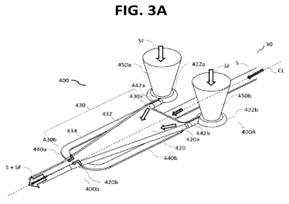Addressing the elements of contributory copyright infringement, the US Court of Appeals for the Tenth Circuit found that a plaintiff had plausibly alleged contributory copyright infringement when he alleged that the defendants had “caused, materially contributed to, or authorized the direct infringement” of his copyrights. Greer v. Moon, et al., Case No. 21-4128 (10th Cir. Oct. 16, 2023) (Bachrach, Moritz, Rossman, JJ.)
Joshua Moon owns and operates the controversial website, Kiwi Farms, “a site ‘built to exploit and showcase those Moon and his users have deemed to be eccentric and weird,’ [m]any of [whom] are physically or mentally disabled.” Russell Greer, who suffers from a form of facial paralysis, was targeted by Kiwi Farms users after Greer sued Taylor Swift in 2016. In 2017, Greer wrote a book to “explain his side of things,” titled “Why I Sued Taylor Swift and How I Became Falsely Known as Frivolous, Litigious and Crazy,” which he published and copyrighted. In 2019, Greer registered his copyright for his song, “I Don’t Get You, Taylor Swift.” Greer alleged that Kiwi Farms users infringed both works by creating and uploading unauthorized audio recordings of the book, posting links to a full copy of the book on the Kiwi Farms platform and uploading his song to the Kiwi Farms website.
Pursuant to the Digital Millennium Copyright Act, Greer sent Moon a takedown notice, identifying the infringing materials and the location of those unauthorized copies. In response, Moon published the takedown notice and Greer’s contact information on Kiwi Farms and responded to Greer via an email in which Moon “derid[ed]” Greer and refused to remove the copyrighted materials. Shortly thereafter, Greer sued Moon and Kiwi Farms for contributory copyright infringement, among other things. The district court granted the defendants’ motion to dismiss for failure to state a claim, and Greer appealed.
The Tenth Circuit explained that there are “three flavors of secondary liability for copyright infringement”:
- Vicarious liability, when a secondary infringer has a financial interest in the exploitation of the copyrighted materials and the ability to supervise the direct infringer
- The inducement rule, when the secondary infringer distributes a device that is intended to be used for copyright infringement
- Contributory liability, when the secondary infringer “causes or materially contributes to” the direct infringer’s activities.
Greer’s claims were based on contributory liability, which occurs when there is direct infringement of a plaintiff’s copyrighted material(s), the defendant had knowledge of the direct infringement and the defendant “intentionally caused, induced, or materially contributed to the direct infringement.”
There was no dispute that Greer’s pro se complaint met the first two prongs of the test. The district court granted the defendants’ motion to dismiss because it found that Greer failed to plausibly plead the third element of contributory infringement: “It is not enough for contributory liability for a defendant to have merely permitted the infringing material to remain on the website, without having induced or encouraged the initial infringement” (internal quotations omitted).
The Tenth Circuit dismissed the district court’s [...]
Continue Reading
read more

 Subscribe
Subscribe



